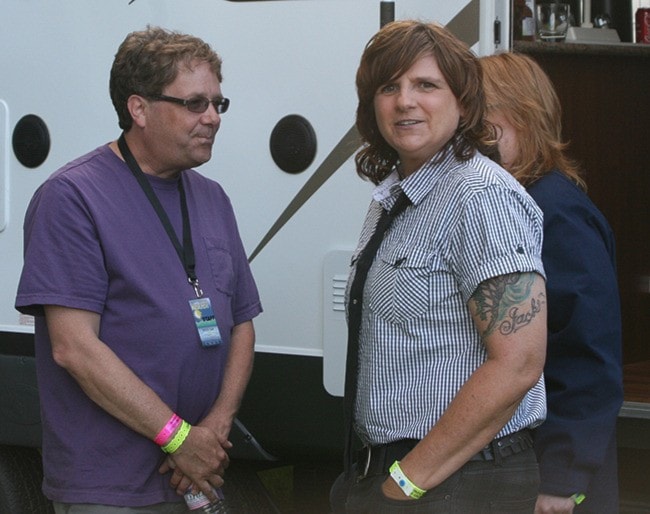This is the first of a three-part series about Vancouver Island MusicFest funding.
The names alone are indicative of its success: Roberta Flack, Emmylou Harris, k.d. lang.
Such is the calibre of talent that has graced the stage at Vancouver Island MusicFest, which is managing to succeed year after year despite a lack of financial assistance from local governments.
Last year, for the first time in its 18-year history, MusicFest sold out in advance. About 10,000 people attended each of the three days, at least half coming from outside the Comox Valley.
This year's event sold out even quicker.
"It's kind of maxed out the last few years," said artistic director/executive producer Doug Cox, who is considering a winter festival in addition to the July event, or again trying four nights of entertainment beginning on the Thursday.
MusicFest receives a minimal level of assistance from local governments compared to other music festivals in B.C. It lost money two years ago but made money last year, and will again this year.
Cox feels the time has come for Valley municipalities to sit up and take notice. While it might have been considered a hippie party in years past, he said MusicFest has evolved into big business. The all-walks-of-life audience consists of doctors, lawyers, teachers and other professionals, as does the Comox Valley Folk Society board of directors.
"Why aren't we recognized as being the highly professional organization that we are?" Cox said. "We are everywhere else. We have this reputation around North America as one of the top five events. It's so frustrating."
Money from the Province and federal funders represents four per cent of the million-dollar MusicFest operating budget. Of that, 63 per cent is federal money, 37 per cent is provincial and zero per cent is municipal, Cox said.
"We are looking for a show of support to demonstrate to our sponsors and public funders that we're important to the municipality," said Cox, who feels MusicFest is being "punished" for being a healthy organization. "They (Province and federal government) want to see diverse sources of funding."
According to a Heritage Canada survey, MusicFest spins off $3 million to $4 million each year to the local economy. Studies from the Winnipeg Folk Fest drew the same conclusion: for every dollar spent, three or four dollars are spent in the community.
In the 2010/11 fiscal year, the B.C. Arts Council assisted 26 music organizations, two of which did not report any local government income. One was MusicFest.
"The amounts ranged from $2,500 up to very large amounts for very large organizations," says Sherri Ewings of the BCAC.
The Vancouver Folk Festival receives $80,000 from the City. In Victoria, the Capital Regional District has a festival operating grant. MusicFest, on the other hand, pays the regional district to use the Exhibition Grounds on Headquarters Road.
Each year, as per its agreement, the festival pays $1,200 worth of site upgrades and about $4,500 for electrical costs, says production manager Cresslyn Fay. Last year, upgrades ran about $3,500 because the site was "a bit of a mess," Fay said.
The end result was about $10,000 between paying cash outs, using sponsorship and tickets for upgrades, and a $4,200-plus rental fee.
See Tuesday’s Comox Valley Record for Part Two of this three-part series: How are music festivals elsewhere treated?
reporter@comoxvalleyrecord.com
